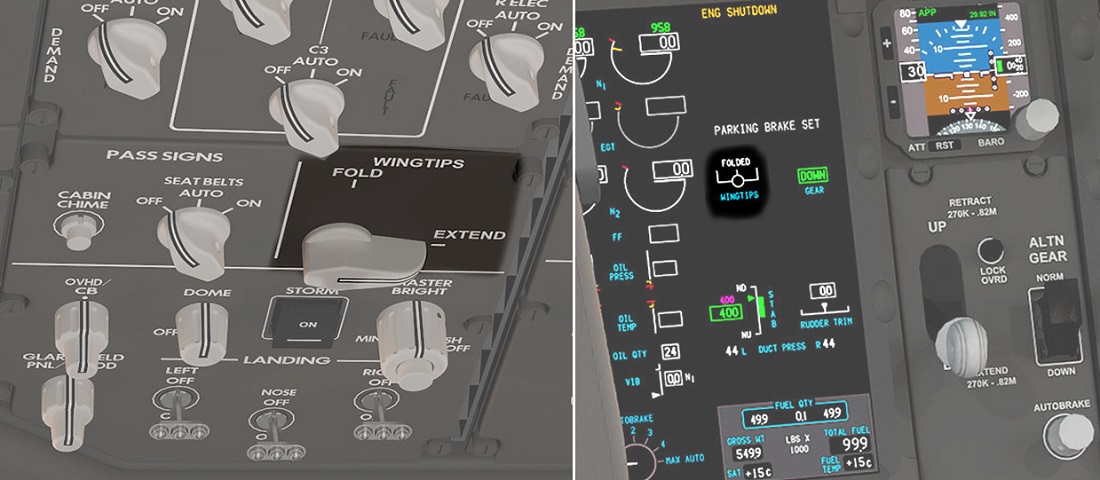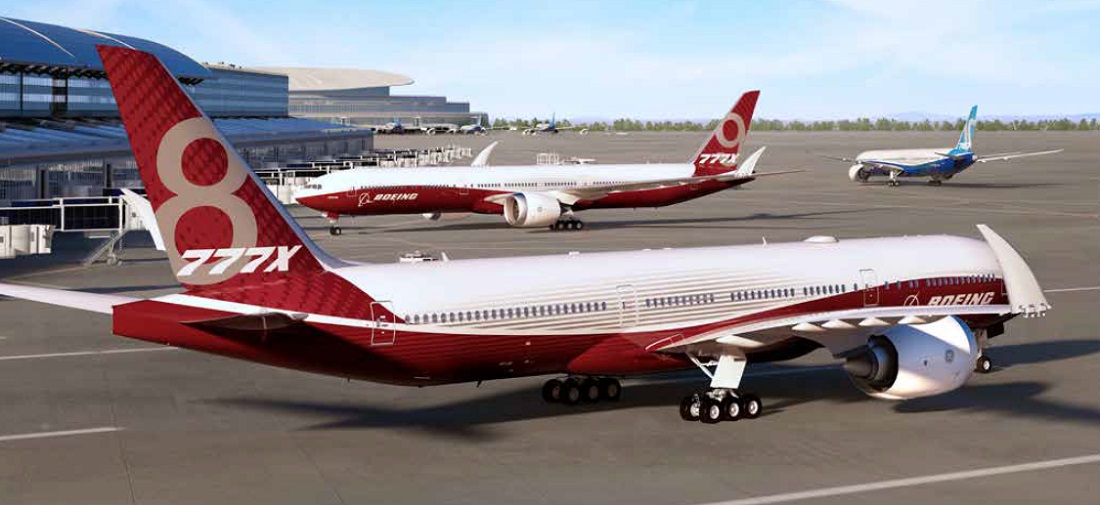US regulators have detailed a series of protective safety measures proposed for the Boeing 777X's folding wing-tips, having drawn comparisons with the risks posed by unreleased gust-locks.
The US Federal Aviation Administration is seeking comments by 18 December on the measures which, it says, are intended to avert a "catastrophic event" should the wing-tips not be secured for take-off and flight.
It compares the situation with the need to ensure gust-locks on aircraft flight surfaces are released; failure to release such locks has contributed to a number of fatal accidents on smaller aircraft types.
But the FAA points out that the scenario falls into a broader consideration of preventing improper aircraft configuration before take-off. Misconfiguration has typically resulted from inadvertent crew action or failure of configuration warning systems.
The FAA special-condition document emerged as Boeing detailed the 777X cockpit during the Dubai air show, indicating both automatic and manual wing-tip fold switches located in the central overhead panel. A wing-fold position indicator will be displayed on the engine-indicating and crew-alerting system (EICAS) display screen on the forward panel between the two pilots (illustrated below).

Boeing/FlightGlobal
Boeing is incorporating the wing-tip fold to reduce the span of the 777-8 and -9 from 235ft to 212ft, in order to comply with airport parking and manoeuvring criteria. No fuel is carried in the tips.
The FAA special conditions require more than one means to alert the crew to an improperly-positioned or unsecured wing-tip prior to take-off.
"Each of these means must be unique in their wing-tip monitoring function," it adds. There must also be an indication to the crew that the wing-tip is folded during taxiing.
But the alert system must go further, and prevent the aircraft from taking off if the wing-tips are not deployed and secured.

The outer portion of each wing folds upwards to comply with airport parking and manoeuvring criteria
Boeing
Once the aircraft is airborne all power sources which could trigger the unlocking of the wing-tips must be "automatically isolated", the conditions state, while the latching and locks need to resist all flight loads.
The entire wing-tip mechanism needs to be capable of withstanding 65kt ground gusts in any direction, while the aircraft must naturally be able to remain under control, with acceptable handling, as the tips are folded during a crosswind landing roll-out.
Each wing-tip folding mechanism must be able to limit the range of motion of the wing-tips, through positive stops, and the hinge structure must handle inertia loads parallel to the hinge line.
Boeing will need to show that an improper wing-tip folding incident is "extremely improbable", and cannot result from a single failure, while providing sufficient alerts to the crew.
Folding the wing-tips on the ground, the document adds, must not affect the visibility – particularly at night – of navigation lights, while the wing-tips will also need to be properly secured to prevent possible injury to ground-handling personnel.
Source: Cirium Dashboard



















